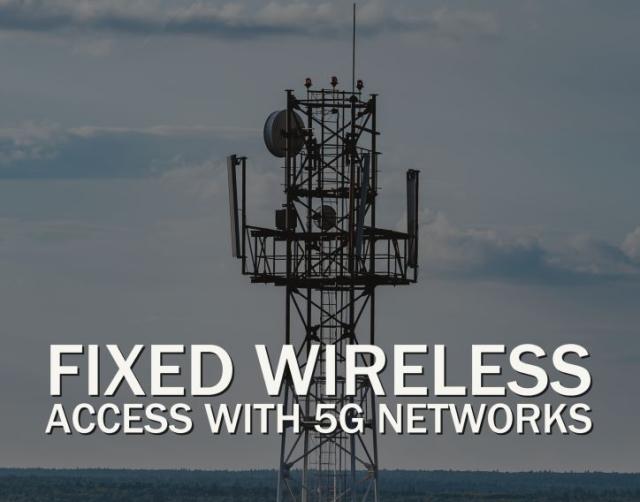The Fixed Wireless Access (FWA) market will exceed 180 million subscriptions and generate $70 billion in revenue in 2026. The 5G FWA market will account for 40 percent of total FWA market, ABI Research said in its latest report.
 Operators are using 5G technology to provide high capacity FWA services. High-speed and low latency supported by 5G networks enable providers to offer attractive and efficient alternatives to fixed broadband services in the areas where fiber-optic broadband doesn’t reach.
Operators are using 5G technology to provide high capacity FWA services. High-speed and low latency supported by 5G networks enable providers to offer attractive and efficient alternatives to fixed broadband services in the areas where fiber-optic broadband doesn’t reach.
“5G FWA services can be deployed faster and at lower cost compared to installing Fiber to the Home (FTTH). Faster time-to-market at a lower Capex is the key advantage of FWA deployments to expand the service coverage and boost adoption,” said Khin Sandi Lynn, industry analyst at ABI Research.
5G rollouts in North America and Western Europe is expected to drive the 5G FWA market as operators target to offer 5G FWA to the areas where FTTH is not covered. Considering the size of the DSL user base in North America and the low FTTH penetration in Western Europe, the opportunity for 5G FWA service is significant.
Despite limited fixed broadband penetration in emerging markets, potentially delayed 5G deployments will result LTE to be dominant FWA service in the forecast period. In 2026, North America and Europe combined will represent nearly 60 percent of global 5G FWA subscriptions.
Most of 5G FWA deployments are using mid-band. However, mmWave is of increasing interest since the higher bandwidth available in mmWave bands can support FWA broadband speed competitive to fiber-optic and DOCSIS technologies.
US-based Verizon is the early adopter of 5G FWA service in mmWave. US Cellular in the US and Fastweb in Italy are planning 5G FWA roll outs using mmWave. Though mmWave supports promising capacity, operators are likely to deploy a mix of mmWave and mid-band to balance speed and coverage.
Besides selecting the right spectrum band to fit the market demand, setting strategies to efficiently monetize FWA services is crucial for service providers.
Forming FWA packages which fit bandwidth and data demand and bundling with value-added services can increase adoption rates. Service providers should explore innovative services to capture revenue creating opportunities, such as cloud gaming, high resolution video streaming, AR/VR based applications for entertainment and healthcare.
FWA is an effective and scalable cellular wireless option for broadband connectivity to stationary equipment that provides Internet access, 5G Americas said in a whitepaper recently.
5G FWA can eliminate the need for costly deployment of fixed access infrastructure while also offering significant peak download and upload rates. FWA solutions are expected to achieve massive scale, with 10 to 100 times more capacity than 4G networks.
Baburajan K





